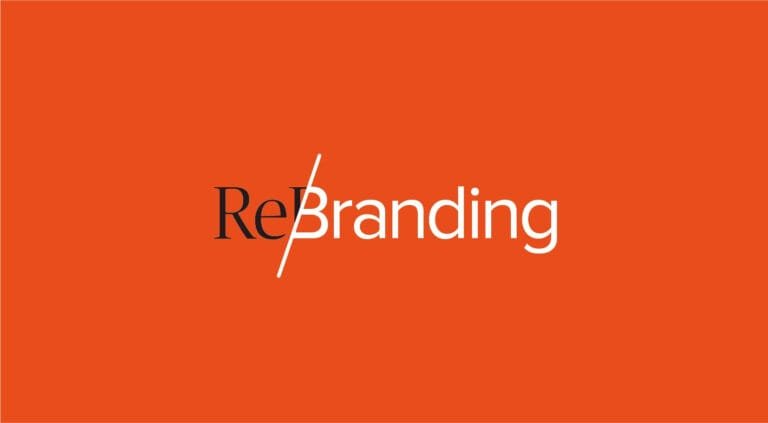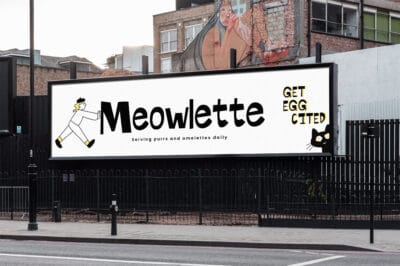What is rebranding? It’s a question many businesses ask when they feel the need to refresh their identity or pivot in response to changing markets. Yet, all too often, rebranding is misunderstood as merely updating a logo or tweaking visual elements. In reality, rebranding goes far deeper—it’s about reshaping perceptions, aligning with strategic goals, and enhancing brand value.
What Is Rebranding? Why We’ve Failed to Explain It Clearly
It’s easy to blame clients for not “getting it.” We roll our eyes when people confuse a brand with its visual identity or logo. We complain about free pitches where clients expect creative solutions without understanding the depth of work involved. And we moan endlessly about how they don’t appreciate the value we bring.
But here’s the truth: It’s not them—it’s us.
What Is Rebranding Beyond Visual Identity?

Ask ten people to define “branding,” and you’ll get ten different answers. Google isn’t much help either, offering two definitions: “the action of marking with a branding iron” (not exactly relevant) and “the promotion of a particular product or company by means of advertising and distinctive design.” If we settle for these oversimplifications, we might as well hand over the reins to ad agencies.
In reality, most people use the term “brand” in one of two ways. Some think of it as their business face—the visual elements like logos, typefaces, and color palettes. Others lean toward Jeff Bezos’ famous definition: “Your brand is what other people say about you when you’re not in the room.”
At Brandlic, we believe the role of a branding agency is to create and implement strategies and tools that shape how people feel about your product, organization, or service. While some may quibble with this exact phrasing, most professionals in the field would agree that a brand is fundamentally an idea—not just a set of design elements. Yes, visual identity is often part of the output, but the true value of branding goes far beyond aesthetics.
Let’s Get Our Story Straight

The problem is that we’ve struggled to communicate this effectively. As an industry, we’ve been reckless with terminology, using terms interchangeably and creating confusion.
Visit any branding agency website, and you’ll see phrases like “brand refresh” used to describe minor tweaks to a logo or font. Case studies labeled as “rebrands” focus solely on changes to visual assets. Worse still, the word “brand” might refer to an abstract concept in one sentence and then switch to describing a visual identity in the next. Look closely, and you’ll notice this inconsistency everywhere.
Even at Brandlic, we’re guilty of perpetuating this issue. The most impactful aspect of our work is developing robust branding strategies. Done right, this framework defines and clarifies everything a client’s business does—both internally and externally—all the factors that influence what people say when you’re not around. There’s also the ongoing guidance on bringing the brand to life across every touchpoint. But let’s be honest: What grabs attention—the PR headlines, Instagram likes, and phone calls—is usually the new visual identity or logo. So that’s what we talk about. But branding ≠ visual identity. By focusing too heavily on the latter, we become our own worst enemies.
Branding Bullshit
Using “brand” and “visual identity” synonymously is only the tip of the iceberg. What about the rampant branding jargon? Absurd terminology, trademark symbols slapped onto buzzwords to make them seem unique, lofty statements (like WeWork’s infamous mission to “elevate the world’s consciousness”), pseudo-science, and nonsensical rationales abound. These practices undermine credibility and set unrealistic expectations.
Then there are the wild overclaims. Clients understandably want proof of effectiveness. But because branding touches every aspect of a business, isolating its impact is nearly impossible. In the absence of verifiable data, it’s tempting to take credit for everything. Phrases like “Our rebrand resulted in a 200% increase in sales” sound impressive in case studies, but anyone who knows anything about business understands that countless variables contribute to such outcomes. These exaggerated claims erode trust and cast doubt on everything else we say.
By trying too hard to appear indispensable, the branding industry has instead made itself suspect. We’ve traded clarity for unnecessary complexity and credibility for baseless audacity.
We Can Do Better
I love this industry and am proud to be a part of it. It’s filled with passionate, skilled, and creative individuals whose warmth, empathy, and generosity match their talent. I’ve witnessed firsthand the transformative power of branding. When done well, it distills complex ideas into simple thoughts, shifts perceptions, and drives behavior. It can mean the difference between success and failure for businesses, revitalize organizations, redefine industries, and even serve as a force for good.
Or…it can simply make a logo look cooler.
Together, we have the power to reshape how people perceive the branding industry. To reframe how they value our work. To demonstrate the profound impact branding strategies can have on every facet of a business.
But first, we need to align. We must be as meticulous with our language as we are when advising clients. Relentlessly consistent. Brutally clear. Practice what we preach.
Because ultimately, branding is what people say it is when we’re not in the room.
get more info related to branding at Brandlic



